I. GROUNDS & RELIEF
1. Plaintiff Pamela Carvel respectfully requests that this Court, following its remand of this case on appeal, order reassignment of the case to a different district court judge because by actions and words reflected in the attached hearing transcript. The district court has left Plaintiff with no meaningful alternative to secure the First, Fifth, and Fourteenth Amendment rights guaranteed by the U.S. Constitution and enforced by U.S. laws.
2. Judge Scheindlin’s bias resulting from “the Second Circuit's very limited remand” (Tr. 2:3-2:4) and unusual circumstances resulting from the judge’s attitude against pro se litigants, and against allegations of corruption by lawyers and judges. This bias is demonstrated by the tone of a hearing convened by the district court’s calling lawyers who did not file Notices of Appearance, to coach the lawyers in a speedy dismissal of Plaintiff’s remanded case by lack of “plausible” claims. “THE COURT: If she can plead a conspiracy against these people that's viable in federal court under the pleading standards, that's that. But it hasn't been tested yet. Do you wish to test it with a motion to dismiss? (Tr. 8:16- 8:19). “THE COURT: Failure to state a plausible claim of conspiracy.” (Tr. 12:10- 12:11).
3. Reassignment is appropriate where the trial judge has engaged in conduct that gives rise to the appearance of impropriety or a lack of impartiality in the mind of a reasonable member of the public. United States v. White, 846 F.2d 678, 696 (11th Cir.), cert. denied, 488 U.S. 984 (1988); 109 S.Ct. 537, 538, 102 L.Ed.2d 568 (1988).
II. STATEMENT OF JURISDICTION
4. This case was never tried. No motions were made before remand. Both for the judge's sake and the appearance of justice, an assignment to a different judge may be desirable and would not effect judicial economy. There is no suggestion in any of the case law that the district court as an institution must first be given the opportunity to consider whether to reassign a case. If the request for reassignment after remand were made of the district judge by a party on bias grounds, the judge's refusal would be directly reviewable in this court by mandamus petition. United States v. Sears, Roebuck & Co., 785 F.2d 777, 780 (9th Cir.1986) cert. denied, 479 U.S. 988 (1986).
5. "The federal appellate courts have broad discretion to fashion remedies upon remand, including reassignment to a different district court judge, pursuant to 28 U.S.C. § 2106." See 28 U.S.C. 2106 (providing that appellate courts may "remand the cause and direct the entry of such appropriate judgment, decree, or order, or require such further proceedings to be had as may be just under the circumstances"). That provision allows this Court to reassign the case to a different judge on remand. United States v. Microsoft Corp., 56 F.3d 1448, 1463 (D.C. Cir. 1995) (per curiam).
6. Unlike recusal, reassignment may be considered by the courts of appeals in the first instance. See, e.g. United States v. Microsoft Corp., 56 F.3d 1448, 1463 (D.C. Cir. 1995) (per curiam); Bemibenista v. United States, 866 F.2d 493,499 (D.C. Cir. 1989); United States v. Tucker, 78 F.3d 1313, 1322-24(8th Cir. 1996); United States v. Sears. Roebuck & Co., 785 F.2d 777, 780 (9th Cir. 1986) (per curiam).
7. The All Writs Act provides that "[t]he Supreme Court and all courts established by Act of Congress may issue all writs necessary or appropriate in aid of their respective jurisdictions and agreeable to the usages and principles of law." 28 U.S.C. § 1651(a).
8. These statutes, as well as the court's inherent authority, allow it to direct that a case on remand be assigned to a different judge. Sederquist v. City of Tiburon, 765 F.2d 756, 763 (9th Cir.1984); Tanner Motor Livery, Ltd. v. Avis, Inc., 316 F.2d 804 (9th Cir.), cert. denied, 375 U.S. 821, 84 S.Ct. 59, 11 L.Ed.2d 55 (1963) (28 U.S.C. Sec. 2106); United States v. Ritter, 273 F.2d 30 (10th Cir.1959), cert. denied, 362 U.S. 950, 80 S.Ct. 863, 4 L.Ed.2d 869 (1960) (inherent authority and All Writs Act); see generally Barber v. United States, 711 F.2d 128 (9th Cir.1983).
9. In the scheme of the federal judicial system, the district court is required to follow and implement appeallate court decisions just as those courts are oath- and duty-bound to follow the decisions and mandates of the United States Supreme Court. "[U]nless we wish anarchy to prevail within the federal judicial system, a precedent of this court must be followed by the lower federal courts no matter how misguided the judges of those courts may think it to be." Hutto v. Davis, 454 U.S. 370, 375, 102 S.Ct. 703, 706, 70 L.Ed.2d 556 (1982); also see United States v. Sears, Roebuck & Co., 785 F.2d 777, 780 (9th Cir.1986) at 780-81 cert. denied, 479 U.S. 988 (1986), 107 S.Ct. 580, 93 L.Ed.2d 583 (1986); United States v. Yagid, 528 F.2d 962, 965 (2d Cir.1976). See also 28 U.S.C. § 2106 (1982).
10. In addition, a court of appeals decision ordering reassignment rests upon a long line of cases permitting a court of appeals to order reassignment of a case to a different judge in the exercise of the court's inherent power to administer the system of appeals and remands. United States v. Sears, Roebuck & Co., 785 F.2d 777; United States v. Alverson, 666 F.2d 341 (9th Cir.1982); United States v. Wolfson, 634 F.2d 1217 (9th Cir.1980); United States v. Ferguson, 24 F.2d 81 (9th Cir.1980); United States v. Robin, 553 F.2d 8 (2d Cir.1977) (en banc); United States v. Yagid, 528 F.2d 962 (2d Cir.1976).
11. Under these standards, reassignment here is warranted to preserve the appearance of fairness, to facilitate completion of the serious legal duties at issue, and to mitigate the wholesale violation of Constitutional rights to redress of grievances, due process, equal treatment, etc. Such rhetoric as memorialized in the transcript of the hearing raises appearance concerns going to the heart of the fairness and decorum of Article III proceedings on civil rights.
4. This case was never tried. No motions were made before remand. Both for the judge's sake and the appearance of justice, an assignment to a different judge may be desirable and would not effect judicial economy. There is no suggestion in any of the case law that the district court as an institution must first be given the opportunity to consider whether to reassign a case. If the request for reassignment after remand were made of the district judge by a party on bias grounds, the judge's refusal would be directly reviewable in this court by mandamus petition. United States v. Sears, Roebuck & Co., 785 F.2d 777, 780 (9th Cir.1986) cert. denied, 479 U.S. 988 (1986).
5. "The federal appellate courts have broad discretion to fashion remedies upon remand, including reassignment to a different district court judge, pursuant to 28 U.S.C. § 2106." See 28 U.S.C. 2106 (providing that appellate courts may "remand the cause and direct the entry of such appropriate judgment, decree, or order, or require such further proceedings to be had as may be just under the circumstances"). That provision allows this Court to reassign the case to a different judge on remand. United States v. Microsoft Corp., 56 F.3d 1448, 1463 (D.C. Cir. 1995) (per curiam).
6. Unlike recusal, reassignment may be considered by the courts of appeals in the first instance. See, e.g. United States v. Microsoft Corp., 56 F.3d 1448, 1463 (D.C. Cir. 1995) (per curiam); Bemibenista v. United States, 866 F.2d 493,499 (D.C. Cir. 1989); United States v. Tucker, 78 F.3d 1313, 1322-24(8th Cir. 1996); United States v. Sears. Roebuck & Co., 785 F.2d 777, 780 (9th Cir. 1986) (per curiam).
7. The All Writs Act provides that "[t]he Supreme Court and all courts established by Act of Congress may issue all writs necessary or appropriate in aid of their respective jurisdictions and agreeable to the usages and principles of law." 28 U.S.C. § 1651(a).
8. These statutes, as well as the court's inherent authority, allow it to direct that a case on remand be assigned to a different judge. Sederquist v. City of Tiburon, 765 F.2d 756, 763 (9th Cir.1984); Tanner Motor Livery, Ltd. v. Avis, Inc., 316 F.2d 804 (9th Cir.), cert. denied, 375 U.S. 821, 84 S.Ct. 59, 11 L.Ed.2d 55 (1963) (28 U.S.C. Sec. 2106); United States v. Ritter, 273 F.2d 30 (10th Cir.1959), cert. denied, 362 U.S. 950, 80 S.Ct. 863, 4 L.Ed.2d 869 (1960) (inherent authority and All Writs Act); see generally Barber v. United States, 711 F.2d 128 (9th Cir.1983).
9. In the scheme of the federal judicial system, the district court is required to follow and implement appeallate court decisions just as those courts are oath- and duty-bound to follow the decisions and mandates of the United States Supreme Court. "[U]nless we wish anarchy to prevail within the federal judicial system, a precedent of this court must be followed by the lower federal courts no matter how misguided the judges of those courts may think it to be." Hutto v. Davis, 454 U.S. 370, 375, 102 S.Ct. 703, 706, 70 L.Ed.2d 556 (1982); also see United States v. Sears, Roebuck & Co., 785 F.2d 777, 780 (9th Cir.1986) at 780-81 cert. denied, 479 U.S. 988 (1986), 107 S.Ct. 580, 93 L.Ed.2d 583 (1986); United States v. Yagid, 528 F.2d 962, 965 (2d Cir.1976). See also 28 U.S.C. § 2106 (1982).
10. In addition, a court of appeals decision ordering reassignment rests upon a long line of cases permitting a court of appeals to order reassignment of a case to a different judge in the exercise of the court's inherent power to administer the system of appeals and remands. United States v. Sears, Roebuck & Co., 785 F.2d 777; United States v. Alverson, 666 F.2d 341 (9th Cir.1982); United States v. Wolfson, 634 F.2d 1217 (9th Cir.1980); United States v. Ferguson, 24 F.2d 81 (9th Cir.1980); United States v. Robin, 553 F.2d 8 (2d Cir.1977) (en banc); United States v. Yagid, 528 F.2d 962 (2d Cir.1976).
11. Under these standards, reassignment here is warranted to preserve the appearance of fairness, to facilitate completion of the serious legal duties at issue, and to mitigate the wholesale violation of Constitutional rights to redress of grievances, due process, equal treatment, etc. Such rhetoric as memorialized in the transcript of the hearing raises appearance concerns going to the heart of the fairness and decorum of Article III proceedings on civil rights.
12. In Haines v. Ligpett Group, Inc., 975 F.2d 81 (3d Cir. 1992), the Third Circuit held that two paragraphs in a single published opinion — accusing the tobacco industry in colorful language of deliberately concealing information about the health risks of its product — warranted reassignment to preserve the appearance of fairness on remand. See 975 F.2d at 97-98.
III. REASONS WHY THE CASE SHOULD BE REASSIGNED TO A DIFFERENT DISTRICT COURT JUDGE
13. This district court’s hearing began with a wholly gratuitous reference to “Our biggest problem” (Tr. 3:1-3:3) referring to Pamela Carvel’s amended complaint, and continued derogatorily referring to Pamela Carvel as one who goes “barging into” Defendant’s office to serve papers (Tr. 13:15-13:16). The hearing included a misstatement of “judicial immunity” (Tr. 3:14) with inference that discovery would quashed. (Tr. 6:19-6:20). Judge Scheindlin followed by coaching Defendants’ lawyers on using plausibility to assert motions to dismiss (Tr. 12,14), and motions for sanctions (Tr. 8:25-9:3). Judge Scheindlin assured “this time, there's no leave to amend.” (Tr. 12:14-12:15). The district court’s pronouncements are even more extraordinary because they are not based on any record of evidence before the court.
14. The transcript of the first hearing in this case demonstrates Judge Scheindlin is frustrated with Petitioner’s persistence in obtaining discovery of the primary evidence from the Scarpinos that would prove or disprove conclusively Pamela Carvel’s assertions of bribery. “Take nonparty discovery, if you can.” (Tr. 6:19-6:20). Judge Scheindlin seemed frustrated to the point of expanding the legal limits of “judicial immunity” beyond the accepted precedents. “Absolute judicial immunity, and his wife.” (Tr. 3:14). The judge’s frustration appears to have affected how the district court has conducted hearings involving pro se Plaintiff and defense counsels. Judge Scheindlin coached Defendants’ lawyers as to how to seek dismissal, “You think there's still a failure to state a claim, a plausible claim of conspiracy? Is that your position?” (Tr. 12:4-12:6) “That's good, because if I dismiss it this time, there's no leave to amend.” (Tr. 12:14- 12:15).
IV. UNDERLYING LEGAL ISSUES EXPLAINED – BUT NOT HERE ARGUED
15. Plaintiff Pamela Carvel does not challenge Judge Scheindlin’s determination on judicial immunity by this application but will indeed assert its impropriety by appeal after Judge Scheindlin dismisses the case again – this time promised by Judge Scheindlin to be dismissed with prejudice. Judge Scheindlin refused to allow an appeal at this time.
16. Judge Scheindlin from the bench questioned the wisdom of the substantive law she had to apply pursuant to the Second Circuit’s remand and challenged the Plaintiff’s right to assert nonjudicial claims against Mr. And Mrs. Scarpino (Tr. 3-6). Mr. And Mrs. Scarpino entered into conspiracies that commenced prior to Anthony Scarpino’s election as Surrogate’s Court judge. Judge Scheindlin indicated “plausibility” could become impossible to overcome because discovery might be impossible to obtain -- “Take nonparty discovery, if you can.” (Tr. 6:19-6:20).
17. Judicial immunity is immunity from suit, not just from ultimate assessment of damages, and it can be overcome only if a judge's actions are nonjudicial or were taken in the complete absence of all jurisdiction. Mireles v. Waco, 502 U.S. 9 (1991). Based on the doctrine expressed in Bradley v. Fisher, 13 Wall. 335 (1872), the Court has consistently adhered to the rule that "judges defending against § 1983 actions enjoy absolute immunity from damages liability for acts performed in their judicial capacities. Pierson v. Ray, 386 U. S. 547 (1967); Stump v. Sparkman, 435 U. S. 349 (1978); Supreme Court of Virginia v. Consumers Union, 446 U. S. 719, 446 U. S. 734-735 (1980); Dennis v. Sparks, 449 U.S. 24 (1980). Judge Scheindlin expanded this doctrine to include a judge’s wife (Tr. 3:14) and the couple’s nonjudicial acts in conspiracy with others. These are two separate issues: immunity for acts as judge; liability for conspiracy against rights (42 U.S.C. 1981 et seq) as individuals with other individuals. The conspiracy is a violation “under color of state law” when the individual uses his official position to further the private conspiracy, but the official act does not determine the existence of the private conspiracy, it merely illegally guarantees success of the private conspiracy.
V. GOVERNING LAW & STANDARD OF REVIEW
18. In the absence of actual bias, the courts of appeals generally ask:
III. REASONS WHY THE CASE SHOULD BE REASSIGNED TO A DIFFERENT DISTRICT COURT JUDGE
13. This district court’s hearing began with a wholly gratuitous reference to “Our biggest problem” (Tr. 3:1-3:3) referring to Pamela Carvel’s amended complaint, and continued derogatorily referring to Pamela Carvel as one who goes “barging into” Defendant’s office to serve papers (Tr. 13:15-13:16). The hearing included a misstatement of “judicial immunity” (Tr. 3:14) with inference that discovery would quashed. (Tr. 6:19-6:20). Judge Scheindlin followed by coaching Defendants’ lawyers on using plausibility to assert motions to dismiss (Tr. 12,14), and motions for sanctions (Tr. 8:25-9:3). Judge Scheindlin assured “this time, there's no leave to amend.” (Tr. 12:14-12:15). The district court’s pronouncements are even more extraordinary because they are not based on any record of evidence before the court.
14. The transcript of the first hearing in this case demonstrates Judge Scheindlin is frustrated with Petitioner’s persistence in obtaining discovery of the primary evidence from the Scarpinos that would prove or disprove conclusively Pamela Carvel’s assertions of bribery. “Take nonparty discovery, if you can.” (Tr. 6:19-6:20). Judge Scheindlin seemed frustrated to the point of expanding the legal limits of “judicial immunity” beyond the accepted precedents. “Absolute judicial immunity, and his wife.” (Tr. 3:14). The judge’s frustration appears to have affected how the district court has conducted hearings involving pro se Plaintiff and defense counsels. Judge Scheindlin coached Defendants’ lawyers as to how to seek dismissal, “You think there's still a failure to state a claim, a plausible claim of conspiracy? Is that your position?” (Tr. 12:4-12:6) “That's good, because if I dismiss it this time, there's no leave to amend.” (Tr. 12:14- 12:15).
IV. UNDERLYING LEGAL ISSUES EXPLAINED – BUT NOT HERE ARGUED
15. Plaintiff Pamela Carvel does not challenge Judge Scheindlin’s determination on judicial immunity by this application but will indeed assert its impropriety by appeal after Judge Scheindlin dismisses the case again – this time promised by Judge Scheindlin to be dismissed with prejudice. Judge Scheindlin refused to allow an appeal at this time.
16. Judge Scheindlin from the bench questioned the wisdom of the substantive law she had to apply pursuant to the Second Circuit’s remand and challenged the Plaintiff’s right to assert nonjudicial claims against Mr. And Mrs. Scarpino (Tr. 3-6). Mr. And Mrs. Scarpino entered into conspiracies that commenced prior to Anthony Scarpino’s election as Surrogate’s Court judge. Judge Scheindlin indicated “plausibility” could become impossible to overcome because discovery might be impossible to obtain -- “Take nonparty discovery, if you can.” (Tr. 6:19-6:20).
17. Judicial immunity is immunity from suit, not just from ultimate assessment of damages, and it can be overcome only if a judge's actions are nonjudicial or were taken in the complete absence of all jurisdiction. Mireles v. Waco, 502 U.S. 9 (1991). Based on the doctrine expressed in Bradley v. Fisher, 13 Wall. 335 (1872), the Court has consistently adhered to the rule that "judges defending against § 1983 actions enjoy absolute immunity from damages liability for acts performed in their judicial capacities. Pierson v. Ray, 386 U. S. 547 (1967); Stump v. Sparkman, 435 U. S. 349 (1978); Supreme Court of Virginia v. Consumers Union, 446 U. S. 719, 446 U. S. 734-735 (1980); Dennis v. Sparks, 449 U.S. 24 (1980). Judge Scheindlin expanded this doctrine to include a judge’s wife (Tr. 3:14) and the couple’s nonjudicial acts in conspiracy with others. These are two separate issues: immunity for acts as judge; liability for conspiracy against rights (42 U.S.C. 1981 et seq) as individuals with other individuals. The conspiracy is a violation “under color of state law” when the individual uses his official position to further the private conspiracy, but the official act does not determine the existence of the private conspiracy, it merely illegally guarantees success of the private conspiracy.
V. GOVERNING LAW & STANDARD OF REVIEW
18. In the absence of actual bias, the courts of appeals generally ask:
(1) "whether the original judge would reasonably be expected upon remand to have substantial difficulty in putting out of his or her mind previously-expressed views or findings determined to be erroneous or based on evidence that must be rejected,"
(2) "whether reassignment is advisable to preserve the appearance of justice," and (3) "whether reassignment would entail waste and duplication out of proportion to any gain in preserving the appearance of fairness."
See United States v. Robin, 553 F.2d 8, 10 (2d Cir. 1977); see also e.g., Cohesive Techs., Inc. v. Waters Corp., 543 F.3d 1351, 1375 (Fed. Cir. 2008) (applying First Circuit law); United States v. Lentz, 383 F.3d 191, 221-222 (4th Cir. 2004), cert. denied, 544 U.S. 979 (2005); Solomon v. United States, 467 F.3d 928, 935 (6th Cir. 2006); Mitchell v. Maynard, 80 F.3d 1433, 1450 (10th Cir. 1996); cf. United States v. Heubel, 864 F.2d 1104, 1112 (3d Cir. 1989) (applying three factors); United States v. White, 846 F.2d 678, 696 (11th Cir.) (same), cert. denied, 488 U.S. 984 (1988); United States v. Wolff, 127 F.3d 84, 88-89 (D.C. Cir. 1997) (same), cert. denied, 524 U.S. 929 (1998); In re DaimlerChrysler Corp., 294 F.3d 697, 700-701 (5th Cir. 2002) (suggesting that the Third, Eleventh, and District of Columbia Circuits apply a "more lenient test" and declining to choose which test to adopt); Simon v. City of Clute, 825 F.2d 940, 943-44 (5th Cir.1987) (footnote omitted) (citing United States v. National Medical Enterprises, Inc., 792 F.2d 906, 914 (9th Cir.1986) (quoting United States v. Robin, 553 F.2d 8, 10 (2d Cir.1977) (en banc)); Bercheny v. Johnson, 633 F.2d 473, 476-77 (6th Cir.1980)); Cook v. Reno, 74 F.3d 97, 99 (5th Cir.1996) (citing Clute and using this test); United States v. Waknine, 543 F.3d 546, 559-560 (2008); United States v. Atondo-Santos, 385 F.3d 1199, 1201 (2004)); United States v. Ressam, 593 F.3d 1095, 1131-1132 (2010); United States v. Paul, 561 F.3d 970, 975 (2009); Rhoades v. Avon Prods., Inc., 504 F.3d 1151, 1165 (2007); United States v. DeMott, 513 F. 3d 55, 59 (2d Cir. 2008).
See United States v. Robin, 553 F.2d 8, 10 (2d Cir. 1977); see also e.g., Cohesive Techs., Inc. v. Waters Corp., 543 F.3d 1351, 1375 (Fed. Cir. 2008) (applying First Circuit law); United States v. Lentz, 383 F.3d 191, 221-222 (4th Cir. 2004), cert. denied, 544 U.S. 979 (2005); Solomon v. United States, 467 F.3d 928, 935 (6th Cir. 2006); Mitchell v. Maynard, 80 F.3d 1433, 1450 (10th Cir. 1996); cf. United States v. Heubel, 864 F.2d 1104, 1112 (3d Cir. 1989) (applying three factors); United States v. White, 846 F.2d 678, 696 (11th Cir.) (same), cert. denied, 488 U.S. 984 (1988); United States v. Wolff, 127 F.3d 84, 88-89 (D.C. Cir. 1997) (same), cert. denied, 524 U.S. 929 (1998); In re DaimlerChrysler Corp., 294 F.3d 697, 700-701 (5th Cir. 2002) (suggesting that the Third, Eleventh, and District of Columbia Circuits apply a "more lenient test" and declining to choose which test to adopt); Simon v. City of Clute, 825 F.2d 940, 943-44 (5th Cir.1987) (footnote omitted) (citing United States v. National Medical Enterprises, Inc., 792 F.2d 906, 914 (9th Cir.1986) (quoting United States v. Robin, 553 F.2d 8, 10 (2d Cir.1977) (en banc)); Bercheny v. Johnson, 633 F.2d 473, 476-77 (6th Cir.1980)); Cook v. Reno, 74 F.3d 97, 99 (5th Cir.1996) (citing Clute and using this test); United States v. Waknine, 543 F.3d 546, 559-560 (2008); United States v. Atondo-Santos, 385 F.3d 1199, 1201 (2004)); United States v. Ressam, 593 F.3d 1095, 1131-1132 (2010); United States v. Paul, 561 F.3d 970, 975 (2009); Rhoades v. Avon Prods., Inc., 504 F.3d 1151, 1165 (2007); United States v. DeMott, 513 F. 3d 55, 59 (2d Cir. 2008).
19. The first two of these factors are of equal importance, and a finding of one of them would support a remand to a different judge. United States v. Alverson, 666 F.2d 341, 349 (9th Cir.1982); United States v. Sears, Roebuck & Co., 785 F.2d 777, 780 (9th Cir.1986) cert. denied, 479 U.S. 988 (1986).
20. Some circuits have said that they will invoke the reassignment power when the facts "might reasonably cause an objective observer to question [the judge's] impartiality." United States v. Microsoft Corp., 56 F.3d 1448, 1463 (D.C.Cir.1995) (quoting Liljeberg v. Health Servs. Acquisition Corp., 486 U.S. 847, 865, 108 S.Ct. 2194, 100 L.Ed.2d 855 (1988)); see also Haines v. Liggett Group, Inc., 975 F.2d 81, 98 (3d Cir.1992) (purpose of reassignment is "to avoid both bias and the appearance of bias"), United States v. Torkington, 874 F.2d 1441, 1446 (11th Cir.1989) ("Reassignment is appropriate where the trial judge has engaged in conduct that gives rise to the appearance of impropriety or a lack of impartiality in the mind of a reasonable member of the public."). This criteria is also demonstrated by the transcript of the hearing.
21. The judicial system has the obligation of preserving public confidence in the impartial and fair administration of justice. If a district judge's continued participation in a case presents a significant risk of undermining this public confidence, this Court has the authority and the duty to order the case reassigned to a different district judge.
20. Some circuits have said that they will invoke the reassignment power when the facts "might reasonably cause an objective observer to question [the judge's] impartiality." United States v. Microsoft Corp., 56 F.3d 1448, 1463 (D.C.Cir.1995) (quoting Liljeberg v. Health Servs. Acquisition Corp., 486 U.S. 847, 865, 108 S.Ct. 2194, 100 L.Ed.2d 855 (1988)); see also Haines v. Liggett Group, Inc., 975 F.2d 81, 98 (3d Cir.1992) (purpose of reassignment is "to avoid both bias and the appearance of bias"), United States v. Torkington, 874 F.2d 1441, 1446 (11th Cir.1989) ("Reassignment is appropriate where the trial judge has engaged in conduct that gives rise to the appearance of impropriety or a lack of impartiality in the mind of a reasonable member of the public."). This criteria is also demonstrated by the transcript of the hearing.
21. The judicial system has the obligation of preserving public confidence in the impartial and fair administration of justice. If a district judge's continued participation in a case presents a significant risk of undermining this public confidence, this Court has the authority and the duty to order the case reassigned to a different district judge.
A. Unusual Circumstances
22. “[I]n a few instances there may be unusual circumstances where . . . assignment to a different judge is salutary and in the public interest, especially as it minimizes even a suspicion of partiality.” United States v. Robin, 553 F.2d 8, 9-10 (2d Cir. 1977). “In such circumstances our remand does not imply any personal criticism of the trial or the sentencing judge.” Id. at 10.
23. In Rhoades v. Avon Prods., Inc., 504 F.3d 1151, 1165 (2007), the court explained that remand to a different district judge is appropriate "if there is a demonstration of personal bias," or if "unusual circumstances" are deemed to exist after considering the three factors outlined above. Ibid. (quoting United Nat'l Ins. Co. v. R&D Latex Corp., 141 F.3d 916, 920 (9th Cir. 1998)).
24. Pamela Carvel asserts that the transcript demonstrates personal bias to the remand, especially in a pro se case against lawyers. Judge Scheindlin’s early exposure as clerk to Judge Brieant’s bias against pro se litigants (see Affirmation at 16) may be the “unusual circumstances” that subconsciously make it difficult for her to hear pro se cases objectively, especially after remand. See, e.g., Research Corp. Techs., Inc. v. Microsoft Corp., 536 F.3d 1247, 1255 (Fed. Cir. 2008) (reassigning case because judge's "previously-expressed views or findings may make it difficult * * * to approach a remanded case with an open mind"); Scherbakovskiy v. Da Capo Al Fine, Ltd., 490 F.3d 130, 142 (2d Cir. 2007) (reassigning case be cause it was "questionable" whether judge could be "objective"); United States v. Andrews, 390 F.3d 840, 851 (5th Cir. 2004) (reassignment because judge "breached the barrier between the rule of law and exercise of personal caprice"); Mitchell v. Maynard, 80 F.3d 1433, 1450 (10th Cir. 1996) at 1448-1450 (reassignment following reversal of entry of judgment as a matter of law where, inter alia, judge previously expressed views that the plaintiff's "Eighth Amendment claims are frivolous, a waste of the jury's time and as a matter of law fail to state a claim"); Hermes Automation Tech., Inc. v. Hyundai Elecs. Indus. Co., 915 F.2d 739, 752 (1st Cir. 1990) (reassignment following reversal of dismissal order where judge had "strong criticism of plaintiffs' claims as not only frivolous, but verging on fraudulent," even though court had "no doubt that the original district judge could handle plaintiffs' claims with unquestionable fairness"); United States v. Torkington, 874 F.2d 1441, 1446-1147 (11th Cir. 1989) (reassignment following reversal of entry of judgment of acquittal where, among other things, the judge "questioned the wisdom of the substantive law" and "challenged the government's decision to prosecute"); In re Ellis, 356 F.3d 1198, 1211 (9th Cir.2004) (en banc) (citation omitted); United States v. Arnett, 628 F.2d 1162, 1165 (9th Cir.1979); Cullen v. United States, 194 F.3d 401, 408 (2d Cir. 1999) (noting that reassignment would be appropriate "in recognition of the 'difficulty' that a judge might have 'putting aside his previously expressed views'") (quoting United States v. Campo, 140 F.3d 415, 420 (2d Cir. 1998)).
23. In Rhoades v. Avon Prods., Inc., 504 F.3d 1151, 1165 (2007), the court explained that remand to a different district judge is appropriate "if there is a demonstration of personal bias," or if "unusual circumstances" are deemed to exist after considering the three factors outlined above. Ibid. (quoting United Nat'l Ins. Co. v. R&D Latex Corp., 141 F.3d 916, 920 (9th Cir. 1998)).
24. Pamela Carvel asserts that the transcript demonstrates personal bias to the remand, especially in a pro se case against lawyers. Judge Scheindlin’s early exposure as clerk to Judge Brieant’s bias against pro se litigants (see Affirmation at 16) may be the “unusual circumstances” that subconsciously make it difficult for her to hear pro se cases objectively, especially after remand. See, e.g., Research Corp. Techs., Inc. v. Microsoft Corp., 536 F.3d 1247, 1255 (Fed. Cir. 2008) (reassigning case because judge's "previously-expressed views or findings may make it difficult * * * to approach a remanded case with an open mind"); Scherbakovskiy v. Da Capo Al Fine, Ltd., 490 F.3d 130, 142 (2d Cir. 2007) (reassigning case be cause it was "questionable" whether judge could be "objective"); United States v. Andrews, 390 F.3d 840, 851 (5th Cir. 2004) (reassignment because judge "breached the barrier between the rule of law and exercise of personal caprice"); Mitchell v. Maynard, 80 F.3d 1433, 1450 (10th Cir. 1996) at 1448-1450 (reassignment following reversal of entry of judgment as a matter of law where, inter alia, judge previously expressed views that the plaintiff's "Eighth Amendment claims are frivolous, a waste of the jury's time and as a matter of law fail to state a claim"); Hermes Automation Tech., Inc. v. Hyundai Elecs. Indus. Co., 915 F.2d 739, 752 (1st Cir. 1990) (reassignment following reversal of dismissal order where judge had "strong criticism of plaintiffs' claims as not only frivolous, but verging on fraudulent," even though court had "no doubt that the original district judge could handle plaintiffs' claims with unquestionable fairness"); United States v. Torkington, 874 F.2d 1441, 1446-1147 (11th Cir. 1989) (reassignment following reversal of entry of judgment of acquittal where, among other things, the judge "questioned the wisdom of the substantive law" and "challenged the government's decision to prosecute"); In re Ellis, 356 F.3d 1198, 1211 (9th Cir.2004) (en banc) (citation omitted); United States v. Arnett, 628 F.2d 1162, 1165 (9th Cir.1979); Cullen v. United States, 194 F.3d 401, 408 (2d Cir. 1999) (noting that reassignment would be appropriate "in recognition of the 'difficulty' that a judge might have 'putting aside his previously expressed views'") (quoting United States v. Campo, 140 F.3d 415, 420 (2d Cir. 1998)).
B. District Judge's Adamance to Prior Conclusions
25. Reassignment may be appropriate, for example, if a judge’s conduct creates the appearance that she is or may be unable to perform her role in an unbiased manner, United States v. White, 846 F.2d at 695 ("[W]here a reasonable person would question the trial judge's impartiality, reassignment is appropriate."); United States v. Holland, 655 F.2d 44 (5th Cir. Unit B 1981) (remarks by judge during trial may give rise to inference of bias or prejudice), or if the judge has demonstrated that she is unwilling to carry out the law in a particular case. Brooks v. Central Bank of Birmingham, 717 F.2d 1340, 1343 (11th Cir.1983) ("stalemated posture" required reassignment of case to different judge)(emphasis added).
26. Judge Scheindlin demonstrated her great difficulty in putting aside her prior conclusions about the merits of this complaint involving corruption by lawyers and that reassignment is necessary to preserve the appearance of impartiality. Although on remand Judge Scheindlin might have fairly considered the complaint on the merits, the transcript demonstrates she has difficulty in so doing. In light of Judge Scheindlin's firmly expressed position memorialized in the transcript, the appearance of impartiality would best be preserved by reassignment of this case. Reassignment will not “entail waste and duplication out of proportion to any gain in preserving the appearance of fairness.” United States v. Robin, 553 F.2d 8, 10 (2d Cir.1977) (per curiam). In determining whether to reassign a case this Court considers not only whether a judge could be expected to have difficulty putting aside her previously expressed views, but also “whether reassignment is advisable to preserve the appearance of justice.” ”‚United States v. Robin, 553 F.2d 8, 10 (2d Cir.1977) (per curiam); See, e.g., United States v. Londono, 100 F.3d 236, 242 (2d Cir.1996).
25. Reassignment may be appropriate, for example, if a judge’s conduct creates the appearance that she is or may be unable to perform her role in an unbiased manner, United States v. White, 846 F.2d at 695 ("[W]here a reasonable person would question the trial judge's impartiality, reassignment is appropriate."); United States v. Holland, 655 F.2d 44 (5th Cir. Unit B 1981) (remarks by judge during trial may give rise to inference of bias or prejudice), or if the judge has demonstrated that she is unwilling to carry out the law in a particular case. Brooks v. Central Bank of Birmingham, 717 F.2d 1340, 1343 (11th Cir.1983) ("stalemated posture" required reassignment of case to different judge)(emphasis added).
26. Judge Scheindlin demonstrated her great difficulty in putting aside her prior conclusions about the merits of this complaint involving corruption by lawyers and that reassignment is necessary to preserve the appearance of impartiality. Although on remand Judge Scheindlin might have fairly considered the complaint on the merits, the transcript demonstrates she has difficulty in so doing. In light of Judge Scheindlin's firmly expressed position memorialized in the transcript, the appearance of impartiality would best be preserved by reassignment of this case. Reassignment will not “entail waste and duplication out of proportion to any gain in preserving the appearance of fairness.” United States v. Robin, 553 F.2d 8, 10 (2d Cir.1977) (per curiam). In determining whether to reassign a case this Court considers not only whether a judge could be expected to have difficulty putting aside her previously expressed views, but also “whether reassignment is advisable to preserve the appearance of justice.” ”‚United States v. Robin, 553 F.2d 8, 10 (2d Cir.1977) (per curiam); See, e.g., United States v. Londono, 100 F.3d 236, 242 (2d Cir.1996).
27. Reassignment is also appropriate in cases where a district court has failed, wittingly or unwittingly, to follow repeated guidance from a court of appeals. Such cases squarely implicate the appearance of justice. A district judge's adamance in making erroneous rulings may justify remand to a different judge. United States v. Doe, 655 F.2d 920, 929 (9th Cir.1981); see also United States v. Larios, 640 F.2d 938, 943 (9th Cir.1981) (remand for resentencing before different judge where original judge had unreasonably refused to wait for transcript of former proceedings before sentencing and was adamant in his belief as to defendant's culpability; he therefore could not reasonably be expected to ignore his conclusions and the appearance of fairness required reassignment); United States v. Ferguson, 624 F.2d 81 (9th Cir.1980) (remand to new judge where original judge created error by refusing to consider mitigating factors before sentencing, where refusal to consider those factors was inconsistent with the need to preserve the appearance of justice and where reassignment would mean little duplication of efforts).
28. In ordering reassignment following consecutive reversals on related points, the en banc First Circuit explained: “A third remand would put the district court judge in a very awkward position. If he ordered a new trial yet again, it might be thought that he was wedded to an outcome; if he altered his result, [one] might suppose that the judge had yielded to exhaustion or to a supposed message from this court.” Conley v. United States, 323 F.3d 7, 15(1st Cir. 2003) (en banc). Although this case has thus far been remanded only once, Judge Scheindlin seems nonetheless to be “wedded to an outcome”. i.e. dismissal with prejudice -- “That's good, because if I dismiss it this time, there's no leave to amend.” (Tr. 12:14-12:15). Although the First Circuit had “no doubt about the good faith of the district judge,” it held that reassignment was warranted “despite the cost of requiring a new district judge to master this record.” Id.
28. In ordering reassignment following consecutive reversals on related points, the en banc First Circuit explained: “A third remand would put the district court judge in a very awkward position. If he ordered a new trial yet again, it might be thought that he was wedded to an outcome; if he altered his result, [one] might suppose that the judge had yielded to exhaustion or to a supposed message from this court.” Conley v. United States, 323 F.3d 7, 15(1st Cir. 2003) (en banc). Although this case has thus far been remanded only once, Judge Scheindlin seems nonetheless to be “wedded to an outcome”. i.e. dismissal with prejudice -- “That's good, because if I dismiss it this time, there's no leave to amend.” (Tr. 12:14-12:15). Although the First Circuit had “no doubt about the good faith of the district judge,” it held that reassignment was warranted “despite the cost of requiring a new district judge to master this record.” Id.
29. In Mackler Productions. Inc. v. Cohen, 225 P.3 d 136 (2d Cir. 2000), the Second Circuit similarly ordered reassignment, to preserve the “appearance of justice” in a protracted and contentious case, after vacating orders in “two separate appeals — raising largely the same questions — on the sanctions issue alone.” Id. at 147. Such cases also implicate efficiency considerations: if a judge “has repeatedly adhered to an erroneous view after the error is called to his attention,” reassignment maybe “advisable in order to avoid ‘an exercise in futility in which the Court is merely marching up the hill only to march right down again.” United States v. Robin, 553 F.2d 8, 10 (2d Cir. 1977) at 11 (citation omitted).
30. Not surprisingly, courts repeatedly have ordered reassignment in cases involving both disparaging judicial comments and a repeated failure to follow appellate guidance. See e.g., Mitchell v. Maynard, 80 F.3d 1433, 1450(10th Cir. 1996) (“The history of this case, combined with evidence of [the judge’s] expressions of his disapproval toward [the party], his attorney and his claims indicate that in order to prevent any probability of unfairness or appearance of impropriety we should direct a new judge to hear the case on remand.”); United States v. Torkington, 874 F.2d 1441, 1447(11th Cir. 1989) (per curiam) (reassignment following two reversals and comment that prosecution was “silly” and a “vendetta”); Sears. Roebuck & Co., 785 F.2d at 781 (reassignment following three reversals and comment that prosecution was “egregious”).
31. “To reassign a case on remand, [the Court] need only find that the facts might reasonably cause an objective observer to question [the judge’s] impartiality.” United States v. Londono, 100 F.3d 236, 242 (2d Cir. 1996) (quoting Pescatore v. Pan American World Airways, Inc., 97 F.3d 1, 21 (2d Cir. 1996)) (internal quotation marks omitted) (abrogated on other grounds by United States v. Mercurris,192 F.3d 290, 294 (2d Cir. 1999)).
VI. REASSIGNMENT IS NOT RECUSAL OR DISQUALIFICATION
32. Plaintiff Pamela Carvel is not acting under the disqualification statutes, by which a party must first invoke before the district court. Instead, this Court is being asked in the first instance to exercise its inherent power to administer the system of appeals and remands by ordering a case reassigned on remand. The basis for the reassignment need not be actual bias on the part of the judge, but rather a belief that the healthy administration of the judicial and appellate processes, as well as the appearance of justice, will best be served by such reassignment.
30. Not surprisingly, courts repeatedly have ordered reassignment in cases involving both disparaging judicial comments and a repeated failure to follow appellate guidance. See e.g., Mitchell v. Maynard, 80 F.3d 1433, 1450(10th Cir. 1996) (“The history of this case, combined with evidence of [the judge’s] expressions of his disapproval toward [the party], his attorney and his claims indicate that in order to prevent any probability of unfairness or appearance of impropriety we should direct a new judge to hear the case on remand.”); United States v. Torkington, 874 F.2d 1441, 1447(11th Cir. 1989) (per curiam) (reassignment following two reversals and comment that prosecution was “silly” and a “vendetta”); Sears. Roebuck & Co., 785 F.2d at 781 (reassignment following three reversals and comment that prosecution was “egregious”).
31. “To reassign a case on remand, [the Court] need only find that the facts might reasonably cause an objective observer to question [the judge’s] impartiality.” United States v. Londono, 100 F.3d 236, 242 (2d Cir. 1996) (quoting Pescatore v. Pan American World Airways, Inc., 97 F.3d 1, 21 (2d Cir. 1996)) (internal quotation marks omitted) (abrogated on other grounds by United States v. Mercurris,192 F.3d 290, 294 (2d Cir. 1999)).
VI. REASSIGNMENT IS NOT RECUSAL OR DISQUALIFICATION
32. Plaintiff Pamela Carvel is not acting under the disqualification statutes, by which a party must first invoke before the district court. Instead, this Court is being asked in the first instance to exercise its inherent power to administer the system of appeals and remands by ordering a case reassigned on remand. The basis for the reassignment need not be actual bias on the part of the judge, but rather a belief that the healthy administration of the judicial and appellate processes, as well as the appearance of justice, will best be served by such reassignment.
33. The Supreme Court did not decide the standard to be applied before a court of appeals reassigns a case to a different judge on remand. The Supreme Court explained that a "[f]ederal appellate courts' ability to assign a case to a different judge on remand rests not on the recusal statutes alone [such as 28 U.S.C. 455], but on the appellate courts' statutory power to 'require such further proceedings to be had as may be just under the circumstances.'" Liteky v. United States, 510 U.S. 540 (1994) at 554. The statutory provisions concerning disqualification of judges, 28 U.S.C. Secs. 144, 455 (1982), do not pose an obstacle to this Court's ordering reassignment of the remanded case. The disqualification statutes provide a method whereby a party to an action may request a judge to disqualify herself on the grounds of bias. Id. The statutory provisions concerning disqualification are not either exhaustive or the exclusive method whereby a judge may be removed from hearing a case.
34. As the Second Circuit decision in United States v. Robin, 553 F.2d 8, 10 (2d Cir. 1977) indicates, the appellate court's authority to reassign exists apart from the judicial disqualification statutes. See 553 F.2d at 11. There is simply nothing in the disqualification statutes to prohibit this Court from taking appropriate action in the first instance. The appearance of justice and the orderly administration of this Court's appellate docket would best be served by reassignment of the remanded case to another judge. Since it appears the original judge has difficulty in putting aside previously expressed views, and reassignment is advisable to avoid the appearance of prejudgment, the case remanded to the district court can be reassigned in keeping with the principles stated in United States v. Robin, 553 F.2d 8, 10 (2d Cir. 1977) (en banc) (per curiam).
35. This Court need not doubt the district court's impartiality to nevertheless believe that reassignment is advisable, "both for the judge's sake and the appearance of justice," given the district court's strong beliefs, and soliciting that Plaintiff acted sanctionably by failing to raise a “plausible” issue. United States v. Robin, 553 F.2d 8, 10 (2d Cir. 1977); also see United States v. Quattrone, 441 F.3d 153, 192-93 (2d Cir. 2006). Reassignment is appropriate where the trial judge has engaged in conduct that gives rise to the appearance of impropriety or a lack of impartiality in the mind of a reasonable member of the public. United States v. White, 846 F.2d 678, 696 (11th Cir.), cert. denied, 488 U.S. 984 (1988); 109 S.Ct. 537, 538, 102 L.Ed.2d 568 (1988).
34. As the Second Circuit decision in United States v. Robin, 553 F.2d 8, 10 (2d Cir. 1977) indicates, the appellate court's authority to reassign exists apart from the judicial disqualification statutes. See 553 F.2d at 11. There is simply nothing in the disqualification statutes to prohibit this Court from taking appropriate action in the first instance. The appearance of justice and the orderly administration of this Court's appellate docket would best be served by reassignment of the remanded case to another judge. Since it appears the original judge has difficulty in putting aside previously expressed views, and reassignment is advisable to avoid the appearance of prejudgment, the case remanded to the district court can be reassigned in keeping with the principles stated in United States v. Robin, 553 F.2d 8, 10 (2d Cir. 1977) (en banc) (per curiam).
35. This Court need not doubt the district court's impartiality to nevertheless believe that reassignment is advisable, "both for the judge's sake and the appearance of justice," given the district court's strong beliefs, and soliciting that Plaintiff acted sanctionably by failing to raise a “plausible” issue. United States v. Robin, 553 F.2d 8, 10 (2d Cir. 1977); also see United States v. Quattrone, 441 F.3d 153, 192-93 (2d Cir. 2006). Reassignment is appropriate where the trial judge has engaged in conduct that gives rise to the appearance of impropriety or a lack of impartiality in the mind of a reasonable member of the public. United States v. White, 846 F.2d 678, 696 (11th Cir.), cert. denied, 488 U.S. 984 (1988); 109 S.Ct. 537, 538, 102 L.Ed.2d 568 (1988).
REFERRAL OF APPARENT FELONIES TO U.S. ATTORNEY
36. Plaintiff Pamela Carvel twice placed before Judge Scheindlin the very serious assertion of conspiracy, against Pamela Carvel’s Constitutional rights, for profit by lawyers engaged in tax fraud and grand larceny under color of state judge-made law apparently induced by bribery, and conflicts of interest. When faced with overwhelming assertions of lawyers’ corruption and violations of civil rights of Pamela Carvel and others, even when such corruption was substantiated by an investigative lawyer from the disciplinary committee, Judge Scheindlin
ignored the duty under 18 U.S.C. § 4 and 18 U.S.C. § 2382. Judge Scheindlin also allow the New York State Attorney General to proceed with gross conflicts of interest by representing accused offenders in nonjudicial acts against the People.
37. In the most recent hearing, Judge Scheindlin demeaned Plaintiff Pamela Carvel’s allegations and assisted in the obstruction of discovery of the evidence that would prove or disprove Pamela Carvel’s assertion of bribery and conspiracy. It is the mandatory duty of every citizen to report felony activities to the judge. It is the judge’s duty as citizen and lawyer to refer these apparent felonies to law enforcement for investigations and prosecutions that a private individual is not authorized to carry out. Plaintiff Pamela Carvel requests that this Court adhere to the requirements of 18 U.S.C. § 4 and 18 U.S.C. § 2382 and refer this case to the U.S. Attorney for investigation and prosecution.
38. For the foregoing reasons, this Court should exercise its discretion under 28 U.S.C. § 2106 to direct the reassignment of this case on remand to a different district court judge and to refer to the U.S. Attorney the serious matter of apparent bribery and judicial corruption in conspiracy against civil rights.
STATEMENT OF VERIFICATION
I have read the above and it is correct to the best of my knowledge.
36. Plaintiff Pamela Carvel twice placed before Judge Scheindlin the very serious assertion of conspiracy, against Pamela Carvel’s Constitutional rights, for profit by lawyers engaged in tax fraud and grand larceny under color of state judge-made law apparently induced by bribery, and conflicts of interest. When faced with overwhelming assertions of lawyers’ corruption and violations of civil rights of Pamela Carvel and others, even when such corruption was substantiated by an investigative lawyer from the disciplinary committee, Judge Scheindlin
ignored the duty under 18 U.S.C. § 4 and 18 U.S.C. § 2382. Judge Scheindlin also allow the New York State Attorney General to proceed with gross conflicts of interest by representing accused offenders in nonjudicial acts against the People.
37. In the most recent hearing, Judge Scheindlin demeaned Plaintiff Pamela Carvel’s allegations and assisted in the obstruction of discovery of the evidence that would prove or disprove Pamela Carvel’s assertion of bribery and conspiracy. It is the mandatory duty of every citizen to report felony activities to the judge. It is the judge’s duty as citizen and lawyer to refer these apparent felonies to law enforcement for investigations and prosecutions that a private individual is not authorized to carry out. Plaintiff Pamela Carvel requests that this Court adhere to the requirements of 18 U.S.C. § 4 and 18 U.S.C. § 2382 and refer this case to the U.S. Attorney for investigation and prosecution.
38. For the foregoing reasons, this Court should exercise its discretion under 28 U.S.C. § 2106 to direct the reassignment of this case on remand to a different district court judge and to refer to the U.S. Attorney the serious matter of apparent bribery and judicial corruption in conspiracy against civil rights.
STATEMENT OF VERIFICATION
I have read the above and it is correct to the best of my knowledge.
DECLARATION UNDER PENALTY OF PERJURY
The undersigned declares under penalty of perjury that she is a party in the above action, that she has read the above, and that the information contained therein is true and correct. (28 U.S.C. 1746, 18 U.S.C. 1621).
August 23, 2010
Respectfully submitted, By: Pamela Carvel
Pamela Carvel, appearing pro se
The undersigned declares under penalty of perjury that she is a party in the above action, that she has read the above, and that the information contained therein is true and correct. (28 U.S.C. 1746, 18 U.S.C. 1621).
August 23, 2010
Respectfully submitted, By: Pamela Carvel
Pamela Carvel, appearing pro se
110 West Ninth Street, Suite 177
Wilmington, Delaware 19801-1618
Telephone 1 954 524 1909





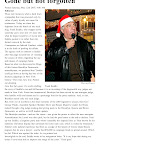

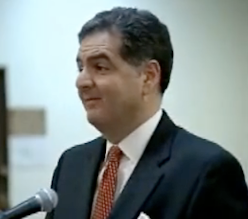
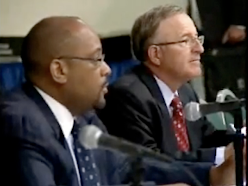
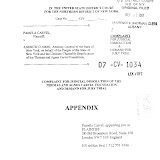

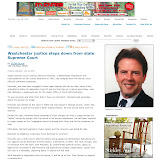
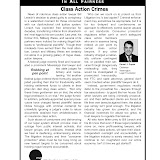

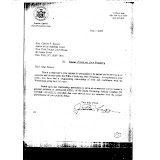
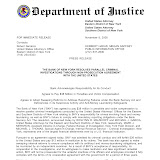
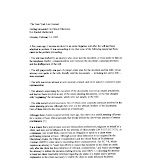
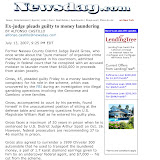
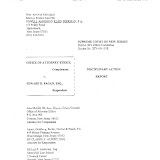
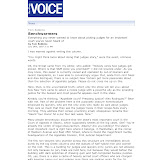
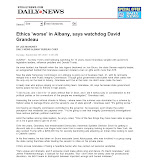
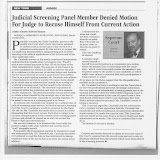



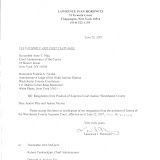
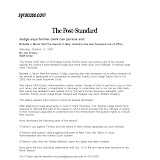
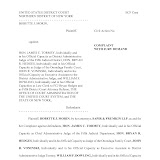

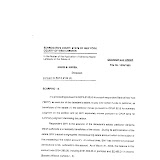
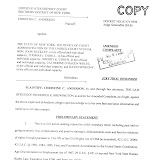
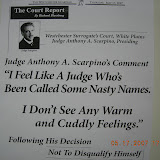
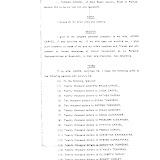
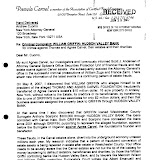
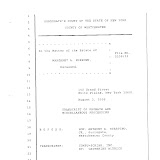
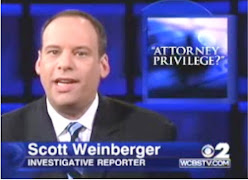
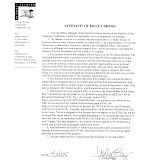
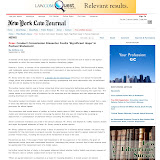
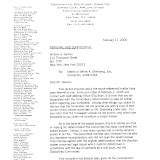
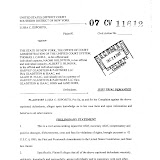
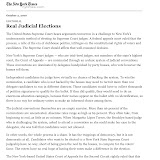
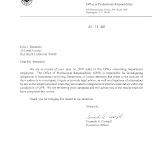
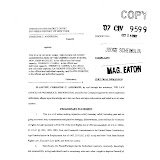
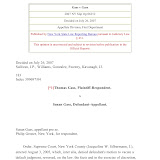
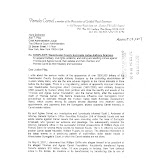

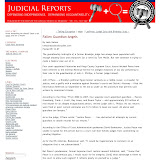
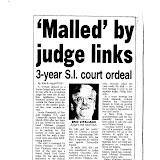
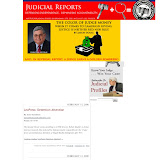
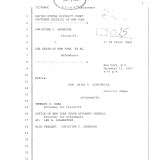
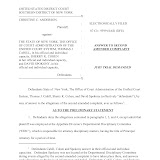
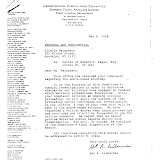
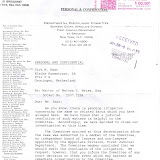
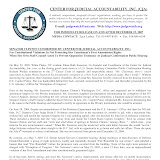


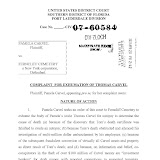
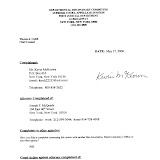
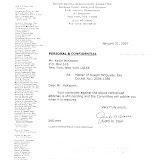
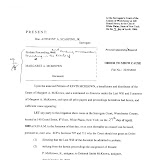
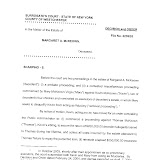
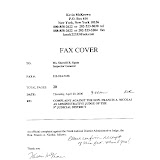

46 comments:
Thank you for this updated news that provides some direction to many folks who have been seeking relief, looking for appropriate action, and seeking direction.
Hudson Valley Region
Why doesn't this website publish what everyone in Westchester knows - that a federal grand jury has been asking a lot of people a lot of questions. I emailed proof to the website 6 months ago!!! I work for a White Plains law firm and KNOW THIS FIRST HAND !!!!!!!
Many folks (read: lawyers) in the 9th Judicial District have a lot to be worried about regarding stealing money that should have gone to the IRS. Helpful hint: don't screw the IRS (that includes banks, bankers, lawyers and judges)
I am a true insider.
I think everyone should follow Will Galson's lead and contact his TV and F.B.I. agent contacts. Be sure to copy Gallison's lawyer Kevin Hall:
Rachel.Rojas@ic.fbi.gov
SSA Rachel Rojas
FBI NYO Squad C3
Work # 212-384-2808
Cell # 917-295-9629
James Hoffer at ABC TV in New York
Jim.P.Hoffer@abc.com
Before you 'copy' Kevin Hall of anything, you should know that Kevin Richard Hall was DISBARRED from the practice of law. Maybe Kevin Hall got disbarred for letting confidential client information out; maybe not. Does anyone know?
This is Kevin R. Hall. If any "anonymous" sources or Non Anonymous sources wish to inquire about anything, feel free to inquire at krhall007@aol.com or changecourtsnow@gmail.com.
Henry Greenberg, Esq. then of Greenberg Traurig handled my application to Judith Kaye's Court at the NYS Court of Appeals. Mr. Greenberg is now Counsel to NY AG Andrew Cuomo in the Executive Office.
The Disbarment proceedings had absolutely no allegations relating to Confidentiality and am fairly certain the "anonymous" source posting here knows that. In fact, all of the allegations in the proceedings have been challenged and are under challenge.
Feel free to write by email at anytime.
Kevin R. Hall
Kinderhook, NY 12106
krhall007@aol.com
changecourtsnow@gmail.com
Oh, and by the way, based on the history of New York over the last 15 years or so, I agree with some friends that it was an Honor in many respects to be "Disbarred" by the operations of the NYS OCA as set out in posts at this blog for over two years running.
krh
This Carvel thing is baloney, pure and simply!
I just read Carvel's papers.... VERY STRONG STUFF!
Maybe the time for change has finally arrived,
I also agree with Bernstein. He has courage while others are simple upstate disbarred complainers making trouble .
To the Anonymous Poster at 2:06 pm, if you are or ever were anyone, you would not be here as an Anonymous poster. Moreover if you had any understanding of anything you would know that the only person who has caused "trouble" at this Blog today is Eliot I. Bernstein in reckeless behavior where he apparently can not even Read a Distribution list.
So if you want to be anything more than a Meaningless Anonymous poster, how about come forward and explain yourself and if you think your comments about "disbarment" have any meaning, you obviously have been hitting the same pipes too much that others have.
kevin r. hall
krhall007@aol.com
changecourtsnow@gmail.com
WOWWWWW...to all of the above Mickey Mouse bloggers!!!!! Go to the another website, there you will find a spot to blog your boloney comments...Thank you.
STAY TUNED....WHAT'S COMING NEXT... YOU WILL SOON SEE!!
OH, BTW.... I really don't have time to read all of this Mickey Mouse crap being posted by disbarred lawyers, and trouble makers...Please, please, this website is here for people who have serious issues at hand...not for CRAZY NUT JOBS...Have a Nice Day!!!!!
uh oh, doo doo doo doo doo doo doo doo, name calling, whoaa, watch out, must be really something to be concerned for. here in the Twilight Zone.
This is why the victims of court corruption have a difficult time getting justice. You are disorganized and the preschool fights should come to a stop in order to achieve goals. The name calling and insults do not belong here among victims of these crimes. I suggest you all get your heads out of your rear ends and concentrated in uniting to fight the big monster instead of looking for skeleton's in your closet and airing your dirty laundry in here. Sincerely a victim trying to find serious people willing to fight for true, honor and justice.
when you have been told you have no rights we will commit Federal Felonies in a Court Of Law.....
How does that make one a complainer? They will keep this woman in and out of court forever and ever and ever and she will never have justice because they all have already terrorized her
bastards
I am upstate complainer this site helps Uncle Tony and Uncle Stein know where to call the Rectal Society In and make sure they get a reaming, if you know what I mean!
They have made it perfectly clear, Federal Felonies, yep, we can and we do do that, on a regular basis
I have no rights and they have made it absolutely clear......
now they will have to wonder just when will that bullet hit your free loading head!
so if you have a fat insurance cheat Racketeer in your neighborhood, you have no rights until the liars are arrested and put in prison!
Block this bi-polar, psychologically unstable blogger named Bernstein. We all know that the FBI often visits this blogspot, so when they see and read Bernstein's assinine comments they hesitate going to the next step; wouldn't you hesitate?
He's a detriment to the aggrieved citizens of the State of NY, and an embarassment to the related cases under Anderson. The word on the street is that his Iviewit CEO is diligently pursuing a SC filing for his shareholders, while Bernstein sits and surfs the web, posts irrelevant comments with his finger up his butt, living off his rich Daddy's money.
She got screwed by a crooked system.
This judge probably got a thick envelope.
see
www.leukemiascandal.com
Does the 2nd circuit allow any pro se cases to get to trial? Or, do they throw them out with the filings?
Why can't a pro se litigant have a jury decide on the merits? Isn't that what our legal system is set-up for?
I thought a Judge was to preside over a court, not to bar access to it.
Can Pamela ask for a change of venue?
They have moved other cases in federal courts because of conflicts, this would seem like one that should qualify.
Sticks and Stones may break my bones but names will never hurt me. What does hurt is PSL's pants down obviously, his smear campaign backfiring into AG complaints for his fraudulent actions and attempted fraud on the US Supreme Court. Per US Supreme's PSL is looloo and his trying to change Court filings to get bogus denials for his friends is weak and ineffectual as are his personal attacks against world famous inventor, myself and writer of the best legal documents since the founders. psl bme
Boy oh boy would I LUV to hear more stories about pro se discrimination in New Yorks honorable Third Branch,
ESPECIALLY of those 'blocked' pro se parties who tried to take on some fellow lawyer, or a tyrant judge.
IDENTIFY YOURSELVES
CAN WE CHAT ???
GO ELLIE
GO ELLIE
We all know that the 9th Judicial district is a letrine among the other districts.
Particurlarly those whose children were sold under the supervision of Judith Kaye and Francis Nicolai in child custody cases in order to rape them, sell them for porn and pandering. Sell them to child sexual predators PEDOPHILES. And the New York State Pro Child Porn and Pedophiles Protection Aids the COURTS seal the porn and pedophilia deals and ensures no investigations ever takes place even when the sexual crime against these children are discovered.
Gladys Carrion is a dirty Rat and most of the Senators going after her as just as dirty right Senator Larking from Orange County.
I challenge Senator Larking from Orange County and Gladys Carrion the head of CPS in New York to demonstrated which one is the dirty one and arrest all of the CPS workers from the CPS Goshen Office in Orange County New York an open every case that has been challenge and open every single investigation involving these child custody rigged cases coming out of the Orange County Supreme And Family Court in Goshen New York.
I wont hold my breath cause I already know the answer to that challenge.
ESPECIALLY of those 'blocked' pro se parties who tried to take on some fellow lawyer, or a tyrant judge
if they infiltrate your lawyer, the defense lawyer and the judges, pro se will work, dreamers, they will just keep doing it, they can not risk getting caught and lying
because someone already got some free money do to it!
I wish Carvel all the best but what they have done to that family is an absolute disgrace to our Court System.........
SHOOT TO KILL!
ESPECIALLY of those 'blocked' pro se parties who tried to take on some fellow lawyer, or a tyrant judge
if they infiltrate your lawyer, the defense lawyer and the judges, pro se will work, dreamers, they will just keep doing it, they can not risk getting caught and lying
because someone already got some free money do to it!
I wish Carvel all the best but what they have done to that family is an absolute disgrace to our Court System.........
SHOOT TO KILL!
I was screwed by the system but one thing others do not know,
that lying insurance cheat not only used the GOP, he then went over to the Democrats and used them....he has to get his free money, so he sets everyone up for the fall except him.......take this trash out!
Maybe DA Violante should get his butt into Piggleton and start charging the liars with not only Insurance Fraud, the Medicaid Fraud claims they are on and be relentless!
Isn't Scarpino up for re-election this fall?
No doubt that it will be uncontested, and he will continue his evil ways.
Is there no way to stop him?
Why doesn't Pam carvel run against the Surrogate Judge Scarpino - maybe she could win and clean the court out?
No doubt that it will be uncontested, and he will continue his evil ways.
Is there no way to stop him
throw him out of the courthouse, simple, let the DA or Feds do it, he has extorted enough money
he can always be set up and go to prison......step down!
NO LAWYER NO JUDGE NO PUBLIC OFFICIAL!
let him go work for Townsend's!
9th Judicial District have a lot to be worried about regarding stealing money that should have gone to the IRS
why isn't Federal Law changed, so that all monies received by a lawyer a 1099-L(liar) is printed and sent to IRS and client!
There is your deficit New York State after you clean up the corruption!
There is our proof to put a corrupt bastard right out of business!
If the IRS really wants to find hidden income, they should shift through some of the matrimonial cases in the 9th. I don't know how many cases I was told of where hidden income and hidden sets of books were passed over and ignored by the judge because he didn't want to deal with it and wanted to protect the evader. This wasn't chump change either.
They do not even file papers in Surrogate Court, if you ask for any legal work on the estate
If you check the Surrogate Courts the same thing is happening
The lawyers have to be accountable then maybe we can trace what they are doing or get a cash discout for services rendered without a receipt
1099-L
They do not even file papers in Surrogate Court, if you ask for any legal work on the estate
If you check the Surrogate Courts the same thing is happening
The lawyers have to be accountable then maybe we can trace what they are doing or get a cash discout for services rendered without a receipt
1099-L
Send the IRS in to every person implicated in this case, they will step down and the 9th may begin to change it's path!
p.s. we are not anonymous on this blog and anyone with a brain knows that! If we can change or give some insight into what is happening, then the Christians will change our courts!
"...the Christians will change our courts..."
I'm sure you know that Scarpino and many others are church going "Christians" And it is not just a matter of who has a vowel at the end of their name.
I'm sure you know of Boss Tweed. He was a Christians and didn't have a vowel ending his name and certainly wrote the book on corrupt politics. There are still vestiges of his administration everywhere.
There is no group that has a lock on corruption, especially in New York politics. It is all about the $s, and New York has more than enough of those.
Tony Scarpino hates Pam Carvel. To her face he was nice on the record, but is the back room he wants her dead for what she said about him and his wife. At least Pam Carvel didn't say anything about any of his lady friends did she! Have another cigarette Tony your chances for lung cancer will rise - LOL Tony!
very good post very interesting..........I like it very much....This is why the fatalities of court dishonesty have a difficult time getting justice. You are incompetent and the preschool fights should come to a stop in order to accomplish goals. The name calling and swearing do not belong here among victims of these crimes. I put forward you all get your heads out of your rear ends and concerted in unite to fight the big enormous instead of looking for skeleton's in your closet and airing your dirty laundry in here. honestly a victim trying to find somber people willing to fight for true, reputation and justice.....
Nice post, kind of drawn out though. Really good subject matter though.
Nice post, kind of drawn out though. Really good subject matter though.
Post a Comment